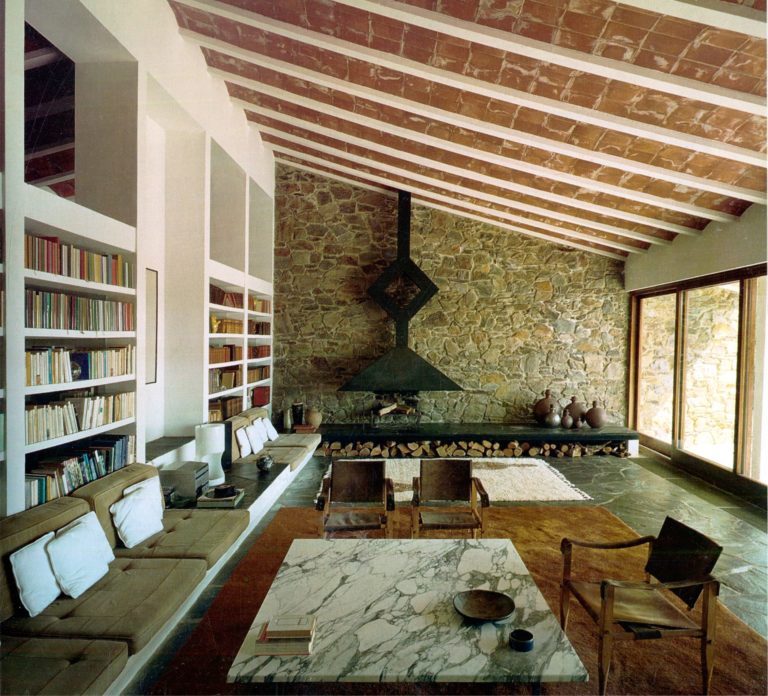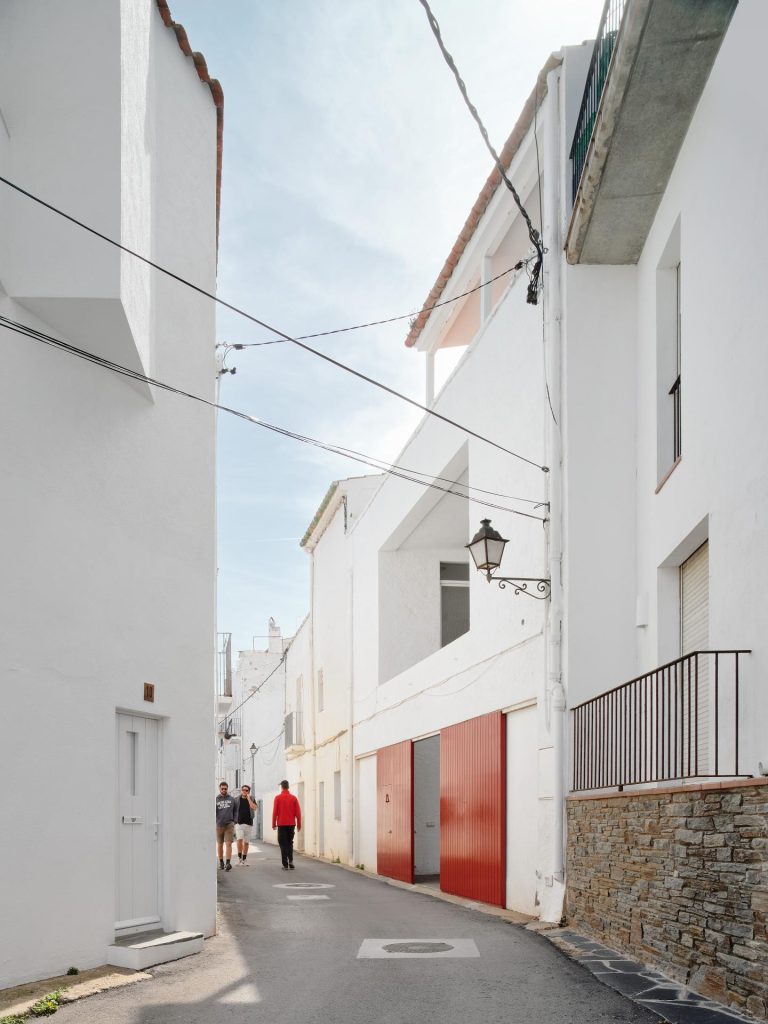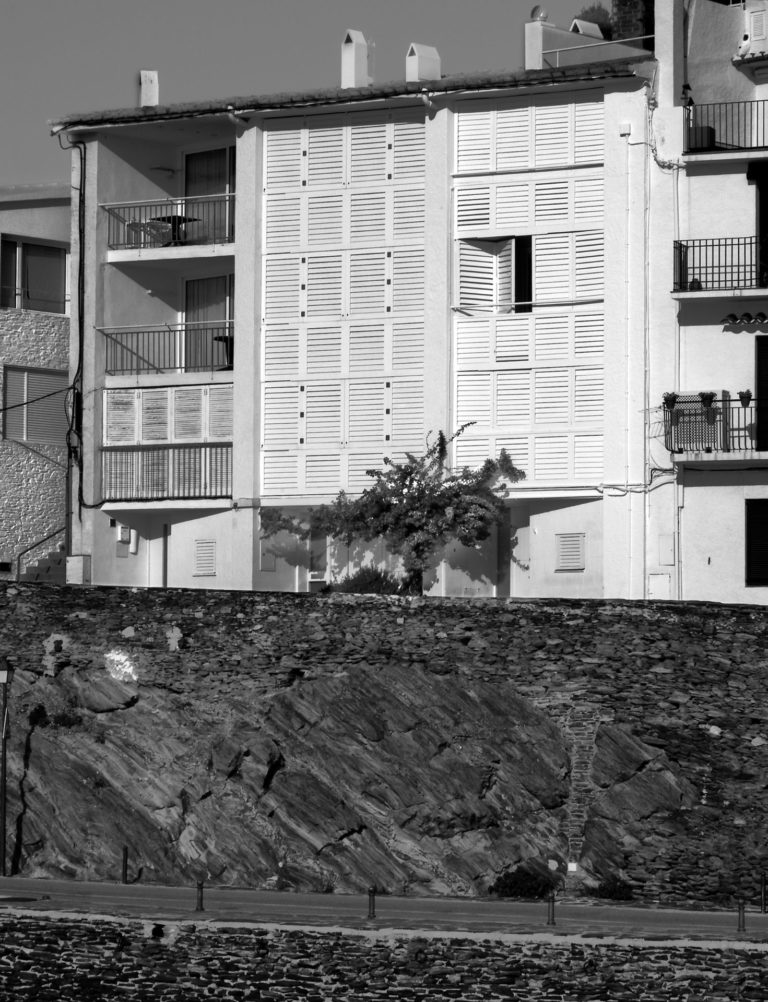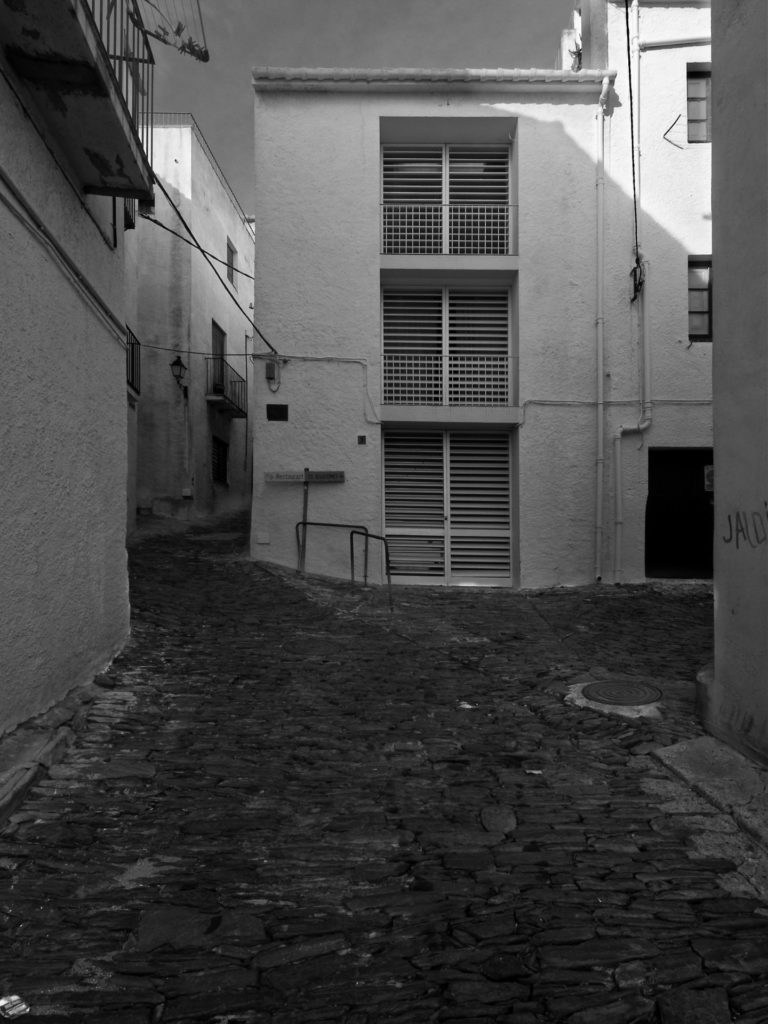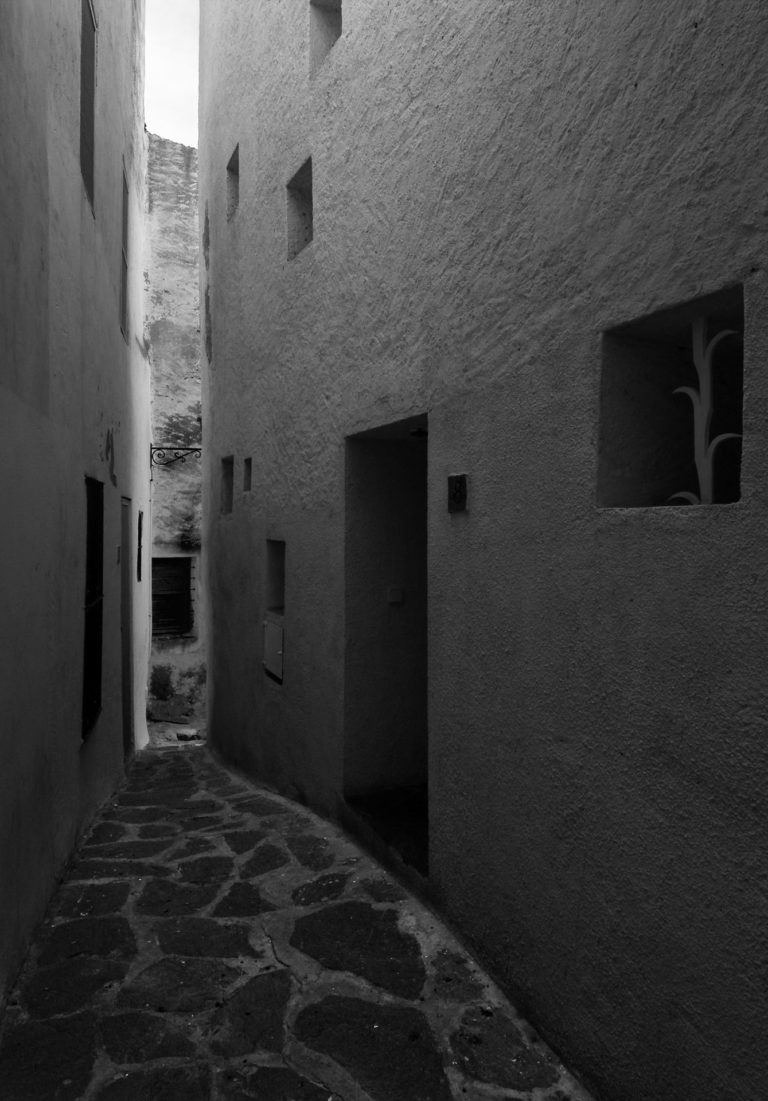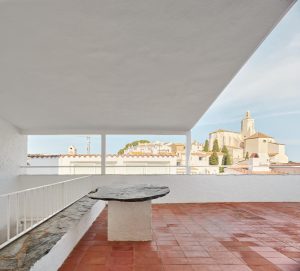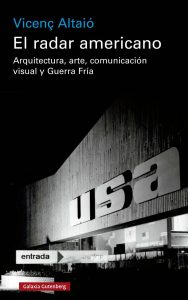Lanfranco Bombelli
Milán, 1921-Cadaqués, 2008
Lanfranco Bombelli Tiravanti was born in Milan in 1921, the same city where he began his studies in architecture. They were interrupted by the Second World War, during which he was stationed in Switzerland. After the war, he finished his studies at the Federal Institute of Technology in Zurich. Around the same time, Max Bill introduced him to the Concrete Art movement and he participated in the organization of the Milan Triennial VIII. In 1950, he joined the ECA’s Visual Information Unit, a centre directed by Peter Harden, installed in the US Embassy in Paris and responsible for disseminating the Marshall Plan through various exhibitions, publications, and audiovisual productions.
From the beginning, Bombelli was part of an international and multidisciplinary team of professionals dedicated to designing the major US exhibitions that toured Europe during the first half of the 1950s, touting the advantages of the Marshall Plan, the history of the birth of NATO, and the advantages of productivity. They included the traveling exhibitions “Europe builds” (1950), “Caravan of Peace” (1952), “Train of Europe” (1952), “Productivity” (1952) and “Barges” (1952), as well as various fixed exhibitions such as “Wir Bauen ein Besseres Leben” (1952), and the organization of a series of exhibitions aimed at disseminating the benefits of atomic energy. Starting in 1955, he handled the design of the US pavilions for European trade fairs, and in 1956 he became the main collaborator with the team at PGHA Peter Graham Harnden Associates, an “international office of architects and technicians specialized in visual advertising and industrial aesthetics” that operated out of Orgeval. In the following years, as independent professionals, they developed more than 400 exhibitions that were presented in major European cities, including the pavilions designed for the fairs in Valencia (1955), Barcelona (1955, 1956, 1957) and Madrid (1959). The rationalist style left an impression on the general public, and especially local professionals, who noted the advantages of the dry construction, the efficiency of the assembly, and the visual possibilities of the advertising.
In 1959, Harnden and Bombelli visited Cadaqués, “the only beautiful town left in Spain”, on the recommendation of Josep Antoni Coderch. Fascinated by the landscape, the geography and the exuberant cultural and social atmosphere in this authentic “island” on the Mediterranean, they decided to buy and renovate Villa Gloria. Very shortly after, in 1962, they settled in Barcelona and founded Harnden & Bombelli. From that point forward, they combined commissions for exhibition designs with other projects of different kinds, notably, a series of homes in Spain, remarkable for their adaptation to the surroundings and an insightful reading of popular tradition, coded through modern values and nuanced by Harnden’s Californian influence as well as Bombelli’s Swiss-based Italianizing take. In the same area of Cadaqués, they renovated various row houses in the centre of the town, including Villa Gloria (1959), Casa Staempfli (1960), the House (1961-1962) and Studio (1964-1966) for the sculptor Mary Callery, and the Bombelli House (1961). They also planned a series of new single-family homes in the surrounding area, such as the Bourdeaux-Groult House (1961-1962) and the Fasquelle House (1968-1971), among others, and developed multi-family buildings such as the Pianc Apartments (1963-1964). Other projects worth remarking, in other parts of Spain, include the De Croisset House (Malaga, 1959-1961), the Parsons House (Benissa, Alicante, 1964-1965) and the Metternich House (Daimiel, Ciudad Real, 1970-1973). In just a decade, the work of Harnden and Bombelli established an unprecedented and enriching dialogue between modernity and the Mediterranean tradition, in a kind of Westinghouse regionalism that alternated between passionate respect for the landscape and traditional construction, and the uninhibited display of a certain sense of comfort. Artificially traditional and designed with the sole purpose of going unnoticed, these houses are like exhibitions, organized around genuinely democratic living rooms centred on the ancestral fire of a hearth. On the whole, Harnden and Bombelli’s career, cut short in 1971 by Harnden’s untimely death, constitutes to this day a unique architectural trajectory that unexpectedly cuts across modernity thanks to an unprecedented concurrence between the conditions imposed by the Cold War and the desire to reconnect with an enduring Mediterranean tradition.
After Harnden’s death, Bombelli published Cadaqués Portfolio in 1971, a portfolio of serigraphs by different artists (Mary Callery, Ivan Chermayeff, Xavier Corberó, Adolfo Estrada, Max Huber, and Bruno Munari, among others) with the aim of raising funds to renovate the exterior of the cemetery in Portlligat, where Harnden is buried. In 1973, the works were presented in an old salting factory on the Riba des Poal in Cadaqués, which Bombelli transformed into an occasional exhibition hall. Given the success of the initiative, he then decided to open the Cadaqués Gallery, an art centre that, under his direction from 1973 and 1997, held more than 200 exhibitions, dedicated to some 100 artists, both domestic and international, often unknown in the Spain of the 1970s and 1980s.
Biography by Julio Garnica
Bibliography
- GARNICA, Julio. “Harnden y Bombelli: regionalismo westinghouse a orillas del Mediterráneo español”, en AA VV, Arquitectura y Medio: el Mediterráneo, XI Congreso Docomomo Ibérico, Fundación Docomomo Ibérico/Colegio Oficial de Arquitectos de Murcia, Murcia, in print, 2024.
- ALTAIÓ, Vicenç, El radar americano. Arquitectura, arte, comunicación visual y Guerra, Fría, Galaxia Gutemberg, Barcelona 2024.
- ARNAL HUGUET, Marc, L’art de viure: Peter Harnden, Lanfranco Bombelli i les cases per a artistes de Cadaqués, Editorial Comanegra, Barcelona, 2021.
- BATES, Stephen, VILLAVECCHIA, Fernando, Lineage and Legacy. A certain Modernism in Cadaqués, Santa & Cole, Barcelona, 2021.
- GARNICA, Julio, “Mejor en equipo: Peter Harnden’s big band architecture”, en RA. Revista de Arquitectura 23, 2021, pp. 96-115.
- PIZZA, Antonio, “Storie di camini: Lanfranco Bombelli e Cadaqués”, en AA VV, ABAV 2015 Annuario Accademia di Belle Arte di Venezia: Il decoro dell’ornamento:due parole obsolete? Venecia: Laterza, 2018, pp. 73-82. También en lengua española en “Historia de unas chimeneas”, en PIZZA, Antonio, El Mediterráneo inventado. Un archipiélago arquitectónico en la España del siglo XX, Ediciones Asimétricas, Madrid, 2020, pp. 146-156.
- ALEGRE, Nacho, The modern architecture of Cadaqués: 1955-71, Apartamento Publishing, Barcelona, 2020.
- PIZZA, Antonio, El Mediterráneo inventado. Un archipiélago arquitectónico en la España del siglo XX, Ediciones Asimétricas, Madrid, 2020.
- GARCÍA-DIEGO, Héctor, VILLANUEVA, María, “Habitar, crear, disfrutar: Villa Gloria de Harnden y Bombelli en Cadaqués (1959)”, in VLC arquitectura. Research Journal 2, v. 7, 2020, pp. 157-184.
- ROSSI, Ugo, “The Best of All Possible Worlds. USA 1949-1959: God’s Own Country”, in HPA Histories of Postwar Architecture 4, 2019, pp. 26-40.
- ROSSI, Ugo, “La trasmigrazione del tipo nell’epoca dello sradicamento culturale nel secondo dopoguerra”, in Firenze Architettura 2, 2019, pp. 102-109.
- ROSSI, Ugo, “This House Is Not a Home”, in La casa. Espacios domésticos. Modos de habitar. II Congreso Internacional Cultura y Ciudad, Granada, Abada Editores, Madrid, 2019, pp. 872-882.
- GARNICA, Julio, “Peter Harnden, Architect. Between the Cold War and the Mediterranean tradition, in FAMagazine. Ricerche e progetti sull’architettura e la città Segreteria di redazione 47, Università degli Studi di Parma, Parma, 2019.
- GARNICA, Julio, “Harnden y Bombelli en el Cadaqués de los 60: entre la Guerra Fría y la tradición mediterránea”, in PIZZA, Antonio, ed., Imaginando la casa mediterránea. Italia y España en los años 50, Museo ICO, Ediciones Asimétricas, Madrid, 2019, pp. 204-219.
- GARCÍA-DIEGO, Héctor, ALCOLEA, Rubén, “Exposiciones ambulantes: campañas propagandísticas estadounidenses en Europa (1949-1959)”, in Constelaciones. Revista de Arquitectura de la Universidad CEU San Pablo 7, 2019, pp. 155-169.
- CECCO, Ascanio, “Mobility and Technical Reproducibility in the Service of Propaganda. “The Marshall Plan mobile exhibitions”, in Transbordeur photographie histoire societé, Photography and exhibition 2, 2018, pp. 102-113.
- GARNICA, Julio, “La americanización toma el mando: Harnden&Bombelli”, in ROVIRA, Josep M., GARCÍA ESTÉVEZ, Carolina, GRANELL, Enrique, eds., Destino Barcelona, 1911-1991. Arquitectos, viajes e intercambios, Fundación Arquia, Barcelona, 2018, pp. 172-187.
- GARNICA, Julio, “La americanización toma el mando: Harnden & Bombelli”, in ROVIRA, Josep, GRANELL, Enric, GARCÍA, Carolina B., eds., Destino Barcelona, 1911-199: arquitectos, viajes e intercambios, Fundación Arquia, Barcelona, 2018, pp. 172-187.
- GARNICA, Julio, “Racionalismos importados. Las exposiciones americanas de Peter G. Harnden associates en la España de los cincuenta”, in Los años CIAM en España: la otra modernidad, AHAU, Madrid, 2017, pp. 254-267.
- GARCÍA-DIEGO, Héctor, VILLANUEVA, María, “Casa LBT 1961: Arte Concreto construido”, in Boletín Académico. Revista de investigación y arquitectura contemporánea Escuela Técnica Superior de Arquitectura. Universidade da Coruña 5, 2015, pp. 19-26.
- GARNICA, Julio, “1948-71. Harnden y Bombelli: arquitectura internacional y Guerra Fría”, in Actas del Seminario Internacional sobre Eventos Mundiales y Cambio Urbano. Sevilla, 2012, pp. 80-93.
- AA VV, Lanfranco Bombelli: US trade center graphics in Europe = esbossos per a la gràfica dels centres comercials americans a Europa: 1963-1977, , Actar, Barcelona 2009.
- AA VV, Galería Cadaqués. Obras de la colección Bombelli, MACBA, Barcelona, 2006.
- GARNICA, Julio, “Harnden y Bombelli en España”, in AA VV, La Arquitectura norteamericana, motor y espejo de la arquitectura española en el arranque de la modernidad. V Congreso Historia Arquitectura, Universidad de Navarra, 2006, pp. 133-142.
- AA VV, Galería Cadaqués (1973-1997), MNCARS, Madrid, 2004.
- PIZZA, Antonio, “lanfranco Bombelli Tiravanti: artista, arquitecto, galerista”, in AA VV, Galería Cadaqués (1973-1997), MNCARS, Madrid, 2004, p. 28.
- GARNICA GONZÁLEZ-BÁRCENA, Julio, “Idilios personales”, in LANDROVE, Susana, ed., Arquitectura moderna y turismo: 1925-1965 [actas IV congreso Fundación DOCOMOMO Ibérico], Fundación DOCOMOMO Ibérico, Barcelona, 2004, p. 107.
- PIZZA, Antonio, “Dos extranjeros en la España de los años sesenta. El viaje de Harnden y Bombelli desde París a Cadaqués”, in AA VV, El Cadaqués de Peter Harnden y Lanfranco Bombelli, Col·legi d’Arquitectes de Catalunya, Girona, 2003. También en PIZZA, Antonio, “Peter Graham Harnden y Lanfranco Bombelli en la España de los 60”, in El Mediterráneo inventado. Un archipiélago arquitectónico en la España del siglo XX, Ediciones Asimétricas, Madrid, 2020, pp. 128-145.
- AA VV, El Cadaqués de Peter Harnden i Lanfranco Bombelli = El Cadaqués de Peter Harnden y Lanfranco Bombelli, Col·legi d’Arquitectes de Catalunya, Demarcació de Girona, Gerona, 2002.

